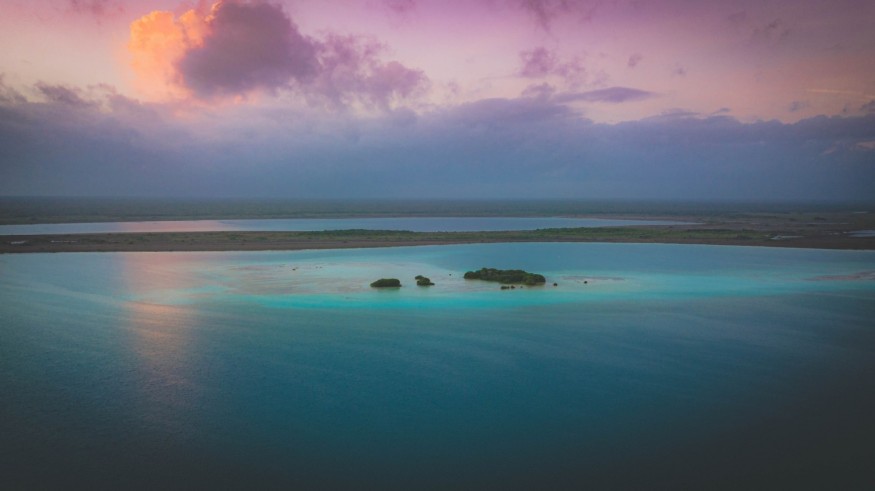
A lifeform that has lived for around 3.5 billion years resides in the Mexican lagoon's seven brilliant shades of blue in Lake Bacalar Bacalar.
Claudio Del Valle, a local tour guide, says that the lake is more than just a 'sparkling thalassic hues' with a limestone bottom, which you can visibly observe when you paddle along its clear water. It is also a home to the oldest life on the planet, in the form of an ancient stromatolites or 'layered rock' in Greek. a living fossil that predates humans, dinosaurs and even plants.
These microbial reefs are layered sedimentary formations formed by photosynthetic cyanobacteria, also known as blue-green algae, building up gradually, layer by layer, over time. Stromatolites resemble a cauliflower but looks like rocks at the same time, but they are actually living things. Del Valle said that the ancient population of stromatolites in the 'Lake of Seven Colors' is under a grave threat of destruction.
The 'Lake of Seven Colors' towards an ecological disaster
"It was paradise," said Del Valle when first stepped foot on the Bacalar's lagoon for the first time, after experiencing post-traumatic stress. "You couldn't believe the sunrise and the sunset; everyone was so unique. But now I can see what is happening... it breaks my heart, it is wrong."
For the past decade, Lake Bacalar has been moving towards an ecological disaster, according to Dr Luisa Falcón, a microbial ecologist at the National Autonomous University of Mexico in Merida. This includes the time in November 2015 when Mexico's federal environmental protection agency issued a pollution alert for the lake.
On June 2020, the problem in the lake arises when its rich thalassic hues turned to dull brown, which still has not fully recovered until now. According to Falcón, the damage is more than just the aesthetic beauty of the brilliantly hued water.
"Bacalar's microbialites have an age range between decades to more than 9,000 years old," she said. But it's the microbialite's living fossil counterpart, the stromatolites, that date back to "approximately 3.5 billion years old," making Bacalar's population the oldest underwater lifeform on Earth.
A history frozen in time
The cauliflower-like stromatolites can only be found in very few locations such as Lake Bacalar, and are considered as 'history frozen in time'. Their fossils can reveal historical information such as temperature or geochemical composition of the water millions of years ago, because they are capable of preserving physicochemical conditions of the water in their 'incredibly slow sedimentation process'. It was said that stromatolites also help recycle elements.
According to Falcón, despite the lake being fed by an underground river with carbonate rock that apparently makes them grow larger than normal, karstic environments also leave them vulnerable to upstream change, especially that deforestation of the rainforest upstream and unsustainable agricultural practices had 'exponentially' increased.
Falcón added that local tourism industry lacks necessary urban planning, including sufficient sewage treatment and sanitary facilities.
Falcón hopes that Lake Bacalar continues to recover and restore its reputation as the 'Lake of Seven Colors' with more sustainable tourism.
© 2025 NatureWorldNews.com All rights reserved. Do not reproduce without permission.





